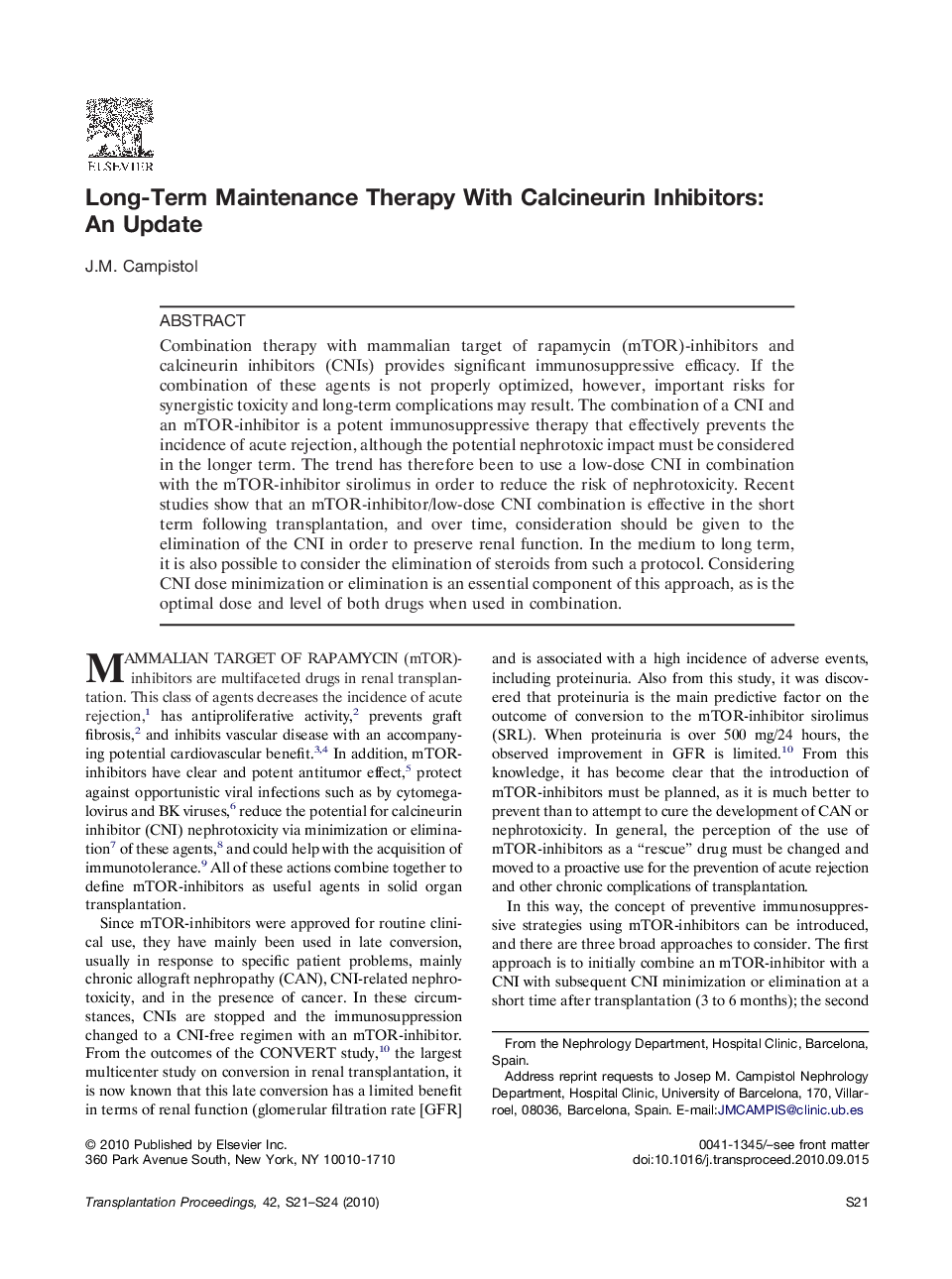| Article ID | Journal | Published Year | Pages | File Type |
|---|---|---|---|---|
| 4257577 | Transplantation Proceedings | 2010 | 4 Pages |
Combination therapy with mammalian target of rapamycin (mTOR)-inhibitors and calcineurin inhibitors (CNIs) provides significant immunosuppressive efficacy. If the combination of these agents is not properly optimized, however, important risks for synergistic toxicity and long-term complications may result. The combination of a CNI and an mTOR-inhibitor is a potent immunosuppressive therapy that effectively prevents the incidence of acute rejection, although the potential nephrotoxic impact must be considered in the longer term. The trend has therefore been to use a low-dose CNI in combination with the mTOR-inhibitor sirolimus in order to reduce the risk of nephrotoxicity. Recent studies show that an mTOR-inhibitor/low-dose CNI combination is effective in the short term following transplantation, and over time, consideration should be given to the elimination of the CNI in order to preserve renal function. In the medium to long term, it is also possible to consider the elimination of steroids from such a protocol. Considering CNI dose minimization or elimination is an essential component of this approach, as is the optimal dose and level of both drugs when used in combination.
